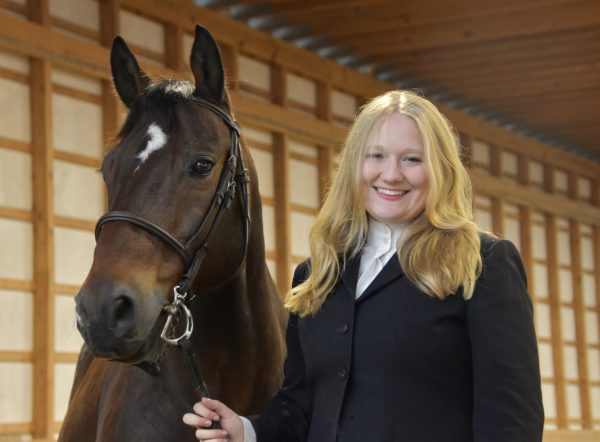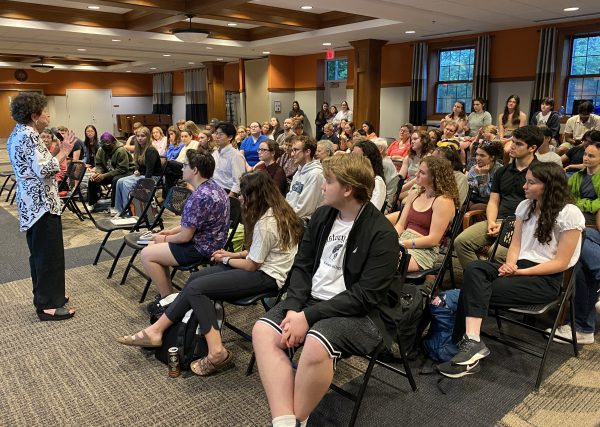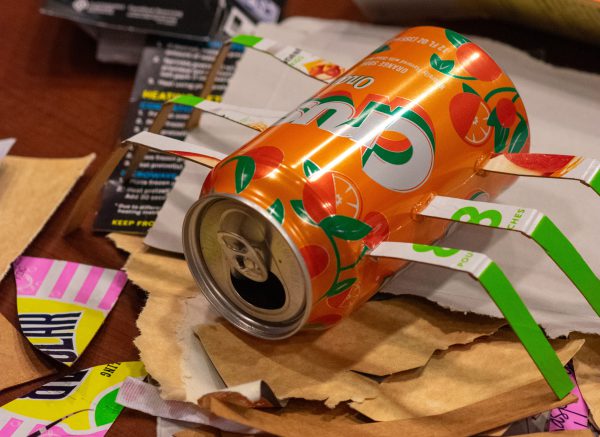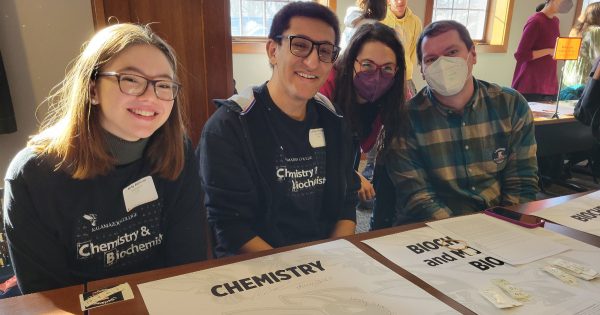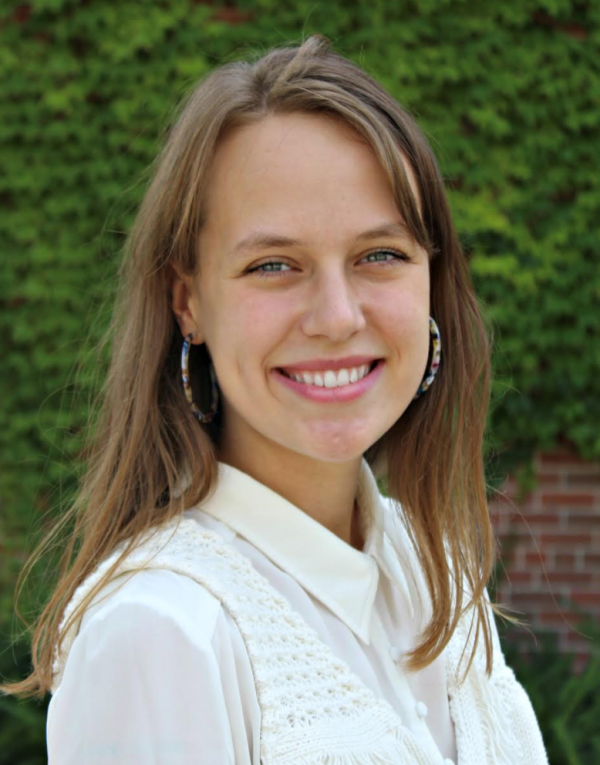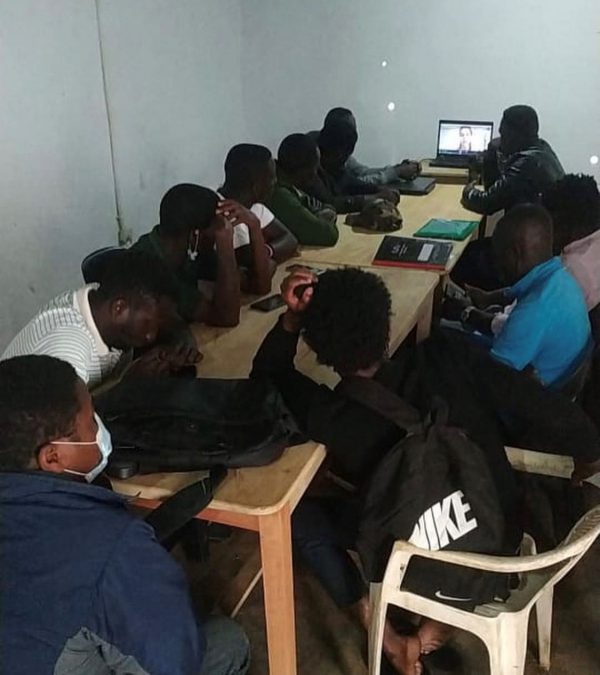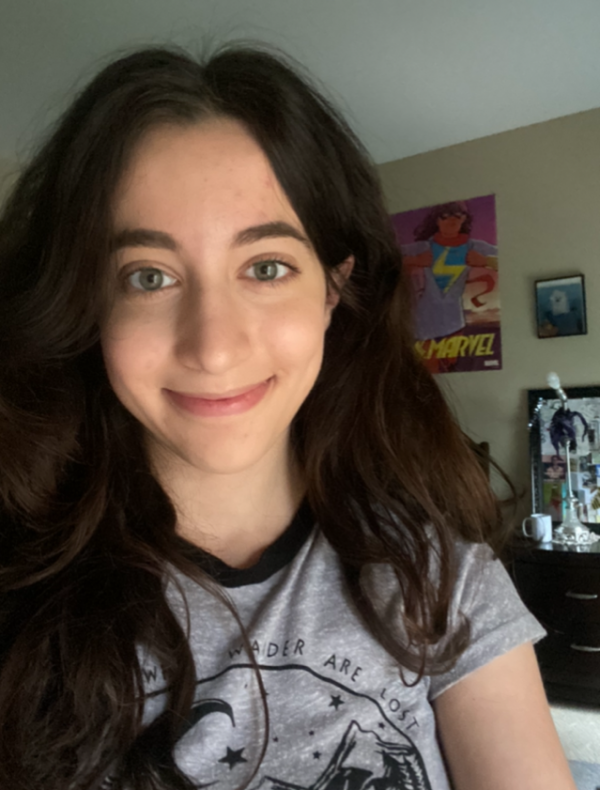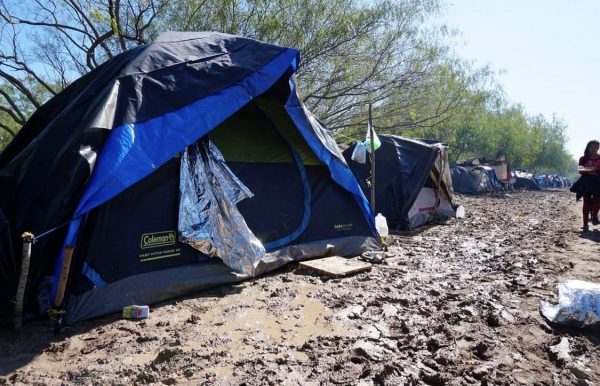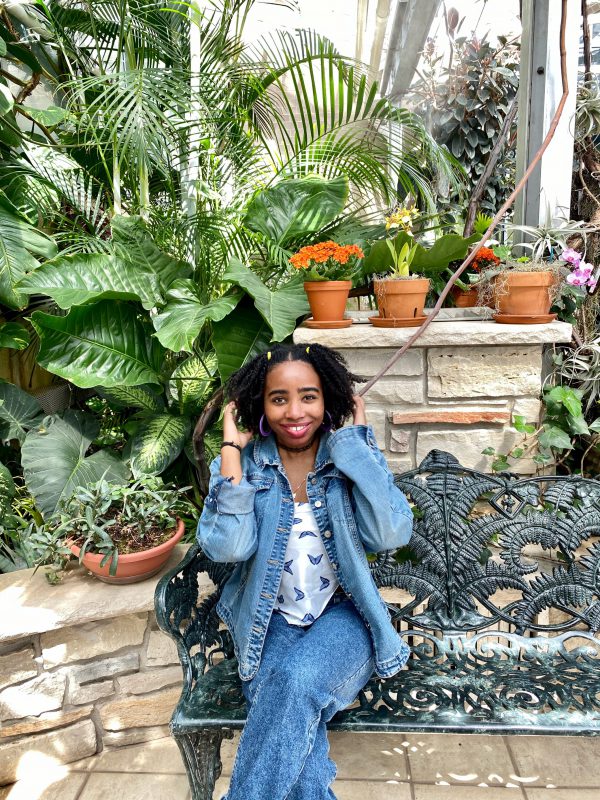As International Women’s Day approaches on March 8, leaders of Kalamazoo College’s Professional Women’s Club (PWC) are reflecting on a successful term of empowering female-identifying students to explore their future career goals.
Open to all majors, PWC brings together students who are seeking to succeed in a variety of professional spaces, especially those where women remain underrepresented.
“With the diversity in academics at a liberal arts school like K, you have the ability to pursue many different passions,” said PWC co-President Alexa Wonacott ’25, who double majors in business and Spanish. “I think our club is cool because you’re working with biology students, psych students and more, and we all have something in common that we want to work on within ourselves. I think it’s awesome that K offers all these different paths, yet you still find a group of people that you have something in common with.”
Recent PWC events have included LinkedIn and résumé-writing workshops. They’ve also involved conversations with Amy MacMillan, who is the L. Lee Stryker Associate Professor of Business at K, and her daughter, Lindsay, a former vice president at Goldman Sachs, and current keynote speaker, author, writing coach and creative leadership expert. Lindsay’s discussions, for example, included elements regarding how to bring creativity into the corporate world.
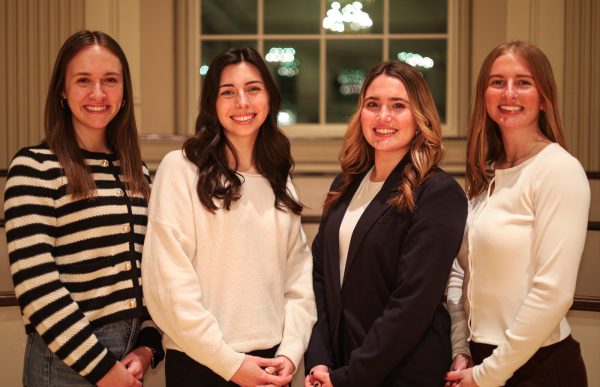
PWC member Grace Westerhuis ’26 and co-President Bailey Callaway ’25 noted they were especially inspired by Lindsay’s message regarding how to fail successfully, and they said their experiences in the group as a whole have been beneficial.
“I thought it was important for me to practice my professional skills and try networking,” Westerhuis said. “Then, I really enjoyed connecting with other female-identifying students, learning about their majors and working together to create this environment where we’re all supporting each other and figuring out our careers and futures.”
“As a business major, I’ve noticed that there are always just a select few female-identifying students within any of my courses because we’re choosing a predominantly male field,” Callaway said. “I felt like it was very important to foster an environment where it was accepting of the women in our school, where we could have our ideas supported and uplifted.”
All three students said PWC has helped them figure out how they plan to proceed when they jump into careers as women in life after K. Callaway, for example, wants to work in hospital or healthcare administration.
“I’ve been surrounded by healthcare my entire life, but I definitely am not the type of person to go in on the clinical side,” she said. “I’ve enjoyed pursuing business, especially at K, so I want to help people, but maybe more in the background by being an administrator.”
Westerhuis, as a junior, still has some time to figure out what she wants to do, although she has enjoyed pursuing ethics and business development.
“I’m looking into finding a consulting path I enjoy, maybe in B to B, so I would like to give advice on how to practice good business ethics because I think our world needs that right now,” she said. “I also love to travel, so anything that can get me to another country sounds great.”
Like Westerhuis, Wonacott enjoyed her study abroad experience and loves to travel.
“I’m hoping to go back abroad after graduation,” she said. “I recently applied for a program that would take me back to Spain to teach for about a year. After that, I’d love to work in international business. I’m interested in large global markets, so some kind of intersection between leadership, travel and big business would be ideal.”
International Women’s Day can trace its roots to February 28, 1909, when the now-dissolved Socialist Party of America organized the first National Woman’s Day. In 1910, a German woman named Clara Zetkin proposed the idea of a global International Women’s Day, so that people around the world could celebrate at the same time. In 1975, the United Nations—which had dubbed the year International Women’s Year—celebrated International Women’s Day on March 8 for the first time. Since then, the U.N. has encouraged more countries to embrace the holiday and its goal of celebrating “acts of courage and determination by ordinary women who have played an extraordinary role in the history of their countries and communities,” according to the U.N.’s website.
Workplace inclusion and decision-making power remain key issues of discussion on International Women’s Day in 2025. In 2024, an S&P Global analysis of more than 1,100 companies showed that women hold about 25.1% of senior management or leadership roles. That figure is up slightly from 24% in 2022 and 23% in 2021, although representation clearly remains low, especially with women of color who hold only about 7% of all c-suite positions at major corporations. Women also hold only about 29% of all revenue-generating management roles in the U.S. and 24.9% of businesses’ board positions.
Wonacott, Westerhuis and Callaway agree that it’s important for PWC to present role models when helping other women learn how to succeed in business despite such odds. They point to alumnae such as Michelle Fanroy ’88, who occasionally visits business classes at K. She is the vice president of the Alumni Association Engagement Board, a member of the Kalamazoo College Board of Trustees, and the founder and president of Access One Consulting, which provides leadership development, mentoring program design and diversity planning and training to corporations.
Wonacott added that the group’s impact grows when students are able to engage one on one with the topics presented at each meeting.
“If somebody can come to our career workshop and leave feeling good about their résumé or their LinkedIn profile, that feels successful to me in the sense that we’re making sure everybody feels like they’ve gotten a lot out of a meeting,” she said.
Callaway emphasized that International Women’s Day is a chance for PWC to highlight and amplify important stories on campus, around the country and around the world.
“We throw around the word celebration a lot, but I feel like that is a good word to describe what the day is about,” she said. “That’s what we try to do as an organization on campus is just uplift, support and promote women.”








